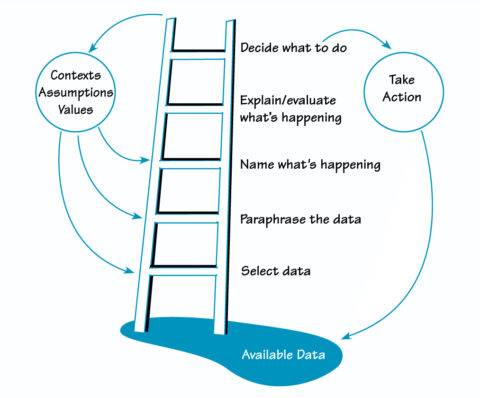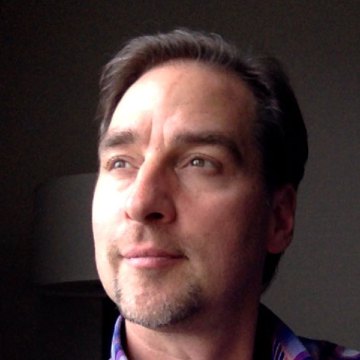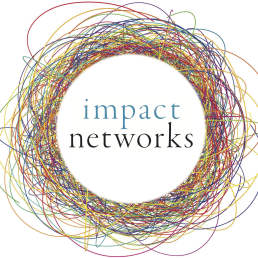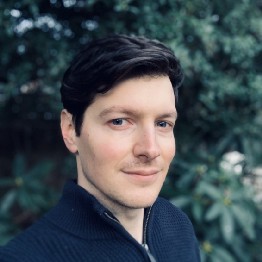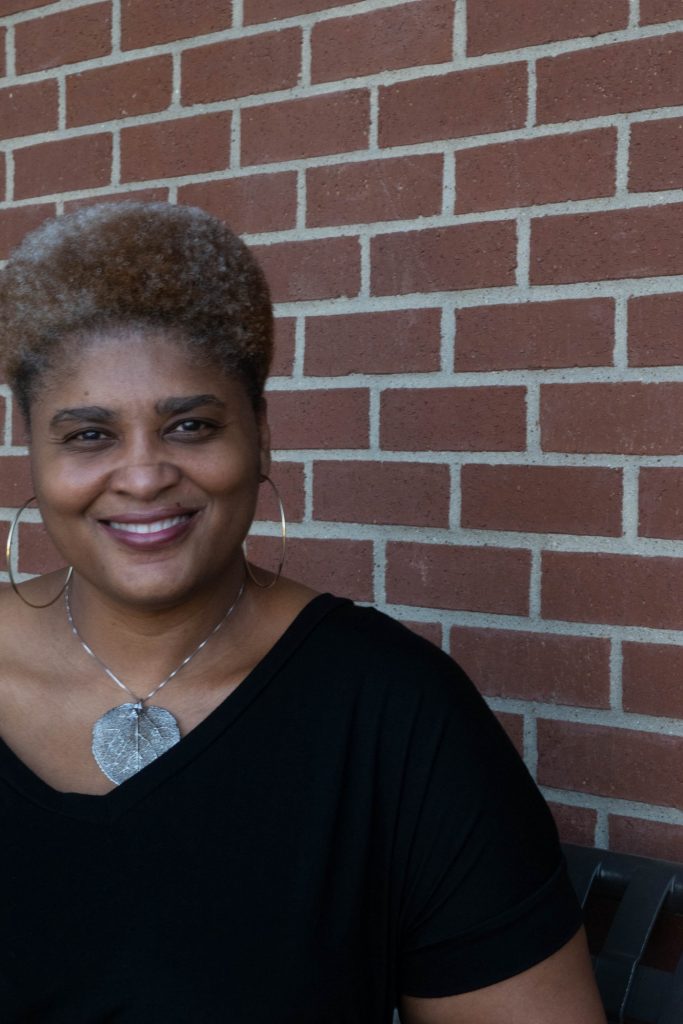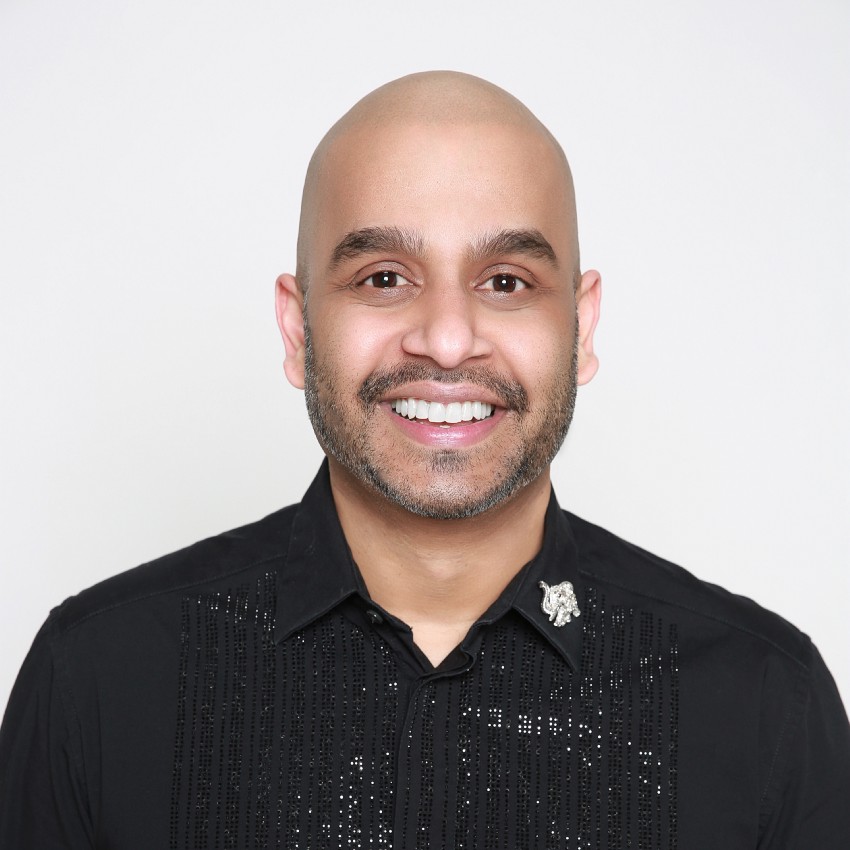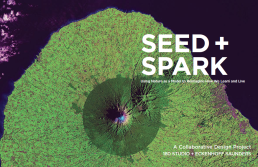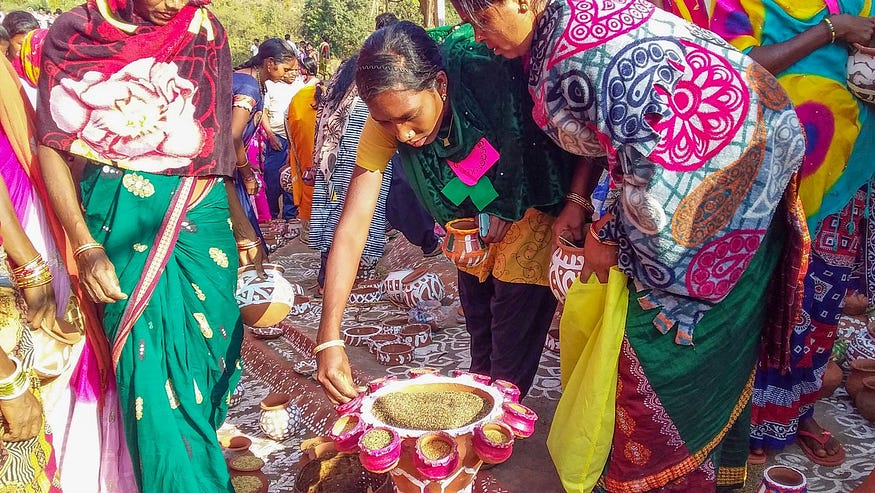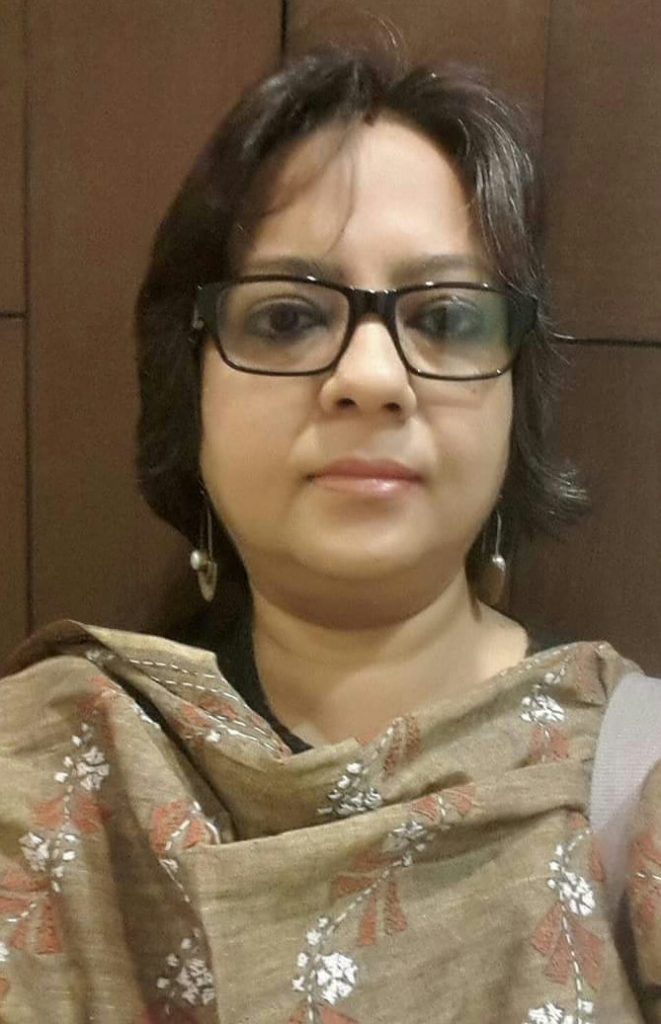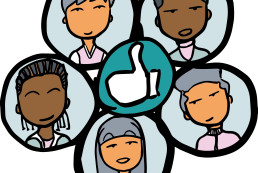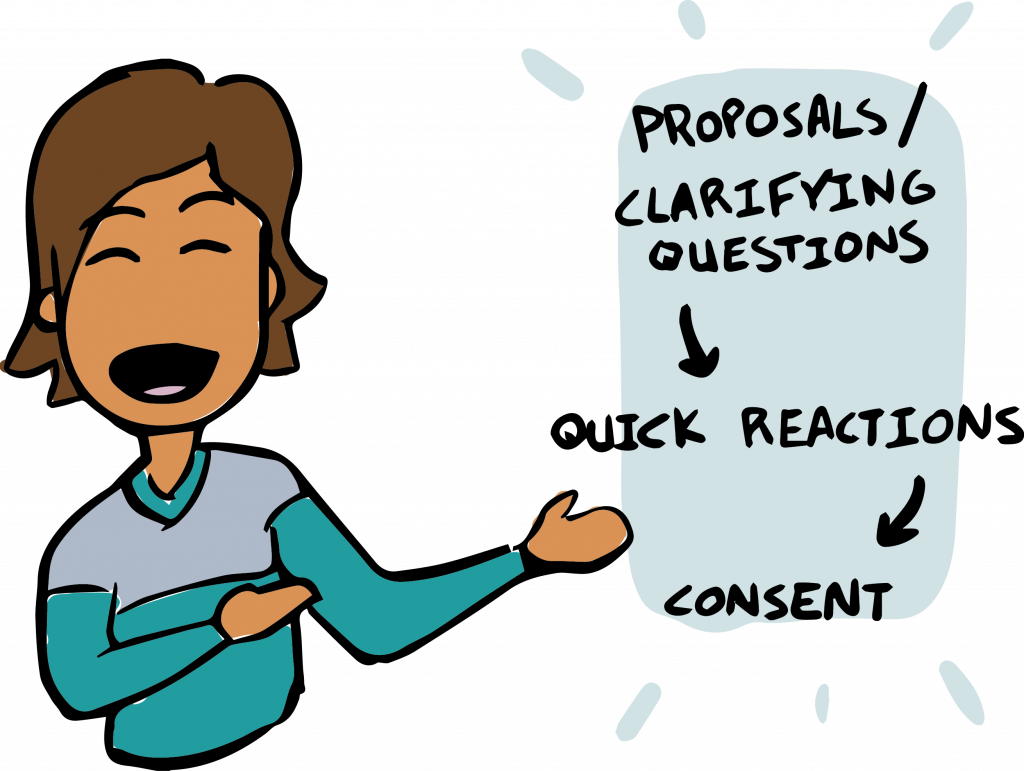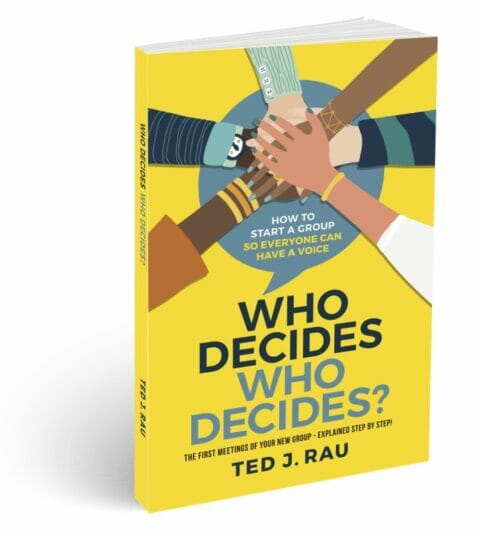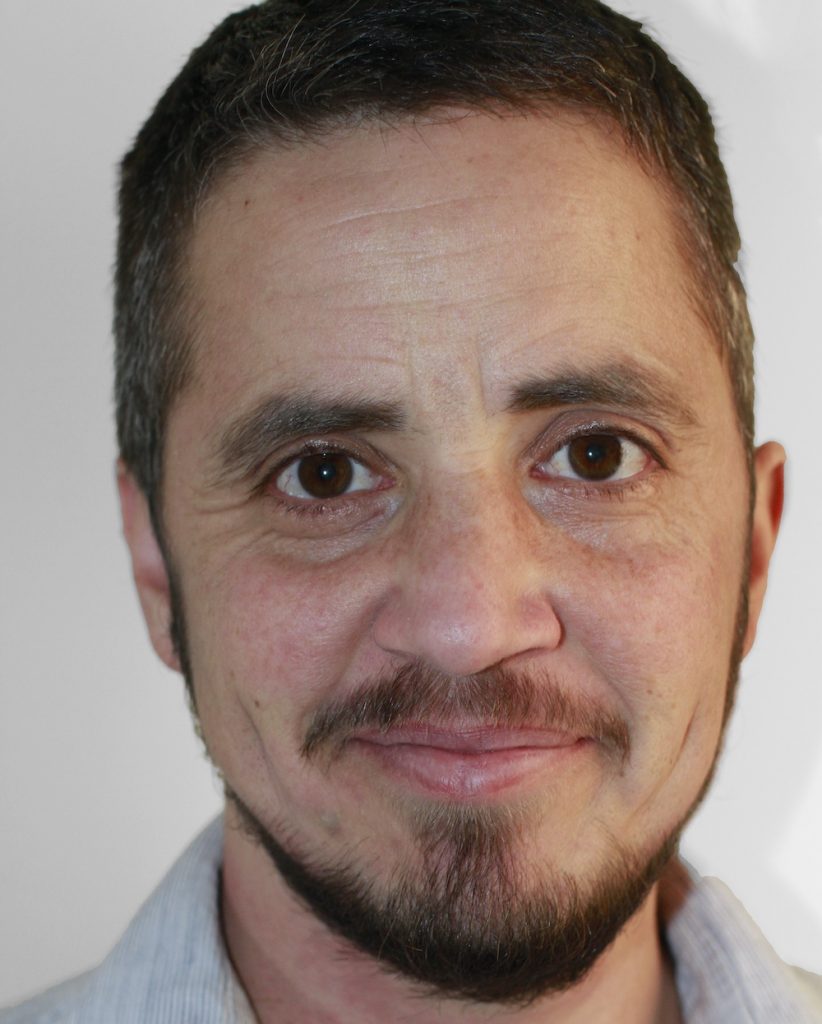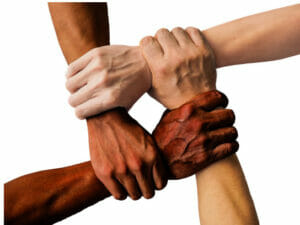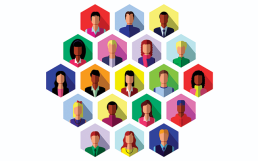Energy Network Literacy: On Care-full Dis-Connection, Dis-Entanglement and Regenerative Flow Management
“i think of movements as intentional worlds, or perhaps more accurately as worlds designed by and for intentional people, those who are able to feel the world not as an unfolding accident of random occurrences, but rather as a massive weaving of intention. you can be tossed about, you can follow someone else’s pattern, or you can intentionally begin to weave and shape existence. and yes, the makeup of your web is the same matter as all that already exists, but your direction and pattern can be new, unexpected, agitating new growth. what results from your efforts depends on your intention.”
– adrienne maree brown
I recently returned from a week-long vacation with family to the so-called Northeast Kingdom of Vermont, and a particular location that is deeply nourishing and meaningful for its landscape, its link to family history on my wife’s side and (perhaps for these times) an unusual sense of community. I count myself privileged to have had the time and the opportunity to be in that place with those loving people, with that sense of multi-generational connection.
Heading back “home,” I could feel the tension mounting as my wife and I talked about re-entry. Before thought, my body tightened in anticipation of the return to the mundane daily tasks, to-do lists and un-answered emails/phone messages. The morning after our return, I somewhat absent-mindedly dipped toes into social media and felt my blood pressure rise. “What am I doing?” I wondered, even as I continued to wade in, pulled by questions about what happened while we were away and what new opportunities might be presenting themselves – FOMO (“fear of missing out”) in full effect. When I closed the laptop, perhaps 30 minutes later, I was aware of my stiff neck, shallow breathing, hunched shoulders, and whirling brain. Saved by a 12 year old daughter almost yelling, “Dad, c’mon, let’s get outside and play ball!”
As much of a proponent as I am of collaboration and networks, I am struck by how I can get a bit caught in the approach/avoid loop of connection, and mired in questions of “How to connect?” and “How much is enough connection?” and “What kinds of connection do I really need?” As I engage with others, I realize that these are pretty fundamental ponderings for navigating a more viscerally entangled world.
“When our ancestors spoke about a web of life, they were describing what Western science calls quantum entanglement. They understood that we all originated from the same seed of life, and when that seed exploded and carried life across our universe, we remained connected. Quantum entanglement tells us that any matter once connected physically can never be disconnected energetically (or spiritually).”
– Sherri Mitchell (Weh’na Ha’mu’ Kwasset, “She Who Brings Light)

More and more is being written, spoken and (re)-presented about the fundamentally interconnected nature of our lives, and of Life writ large. In a beautiful essay in Emergence Magazine (“When You Meet the Monster, Anoint Its Feet”) , which weaves connections between climate change, race, racism, evolutionary biology, ecology, myth and narrative, Bayo Akomolafe offers …
“Perhaps most important about this time is that the image of the human is being composted—or, we are experiencing great difficulty determining where the nonhuman stops and the human begins. Everything touches everything else in the Anthropocene—an observation that is supported by, say, current thinking about ‘holobionts,’ assemblages of bodies within bodies within bodies, or intersecting communities that toss out notions of separable individuality. We are holobionts. We live and are lived through; we are composite beings, companion species, emerging within and among assemblages.”
And, as Akomolafe later shares from his indigenous and experiential knowledge, bodies and beings transcend time. More recent research into intergenerational trauma (see the work of Resmaa Menakam and Thomas Hubl) shows that our bodies indeed know the score, not only of our own individual pain, but the suffering passed through our ancestral lines. Husband and wife, and astrophysicist and physician, team Karel and Iris Schriyver, in their book “Living With the Stars,” add that our bodies are always in dynamic exchange with … the wider universe! Our cells die and are replaced by new ones, renewing our entire biological makeup, using food and water as both fuel and construction material. This rebuilding happens by using elements captured in our surroundings and cycled through geological processes, all extensions of galactic explosions and ripples and atoms that formed through collisions with our planet’s atmosphere eons ago.
We are entangled in a multiplicity of ways, containing and residing within multi-dimensional multi-scalar multitudes. I find this simultaneously liberating, dizzying, humbling and dumbfounding. Knowing that everything is interconnected can inspire a profound sense of belonging and ease, yes, and sometimes it can make it a bit hard for me to plan or get through the day!
And so here we are, exquisitely entwined, and yet also individuals, or at least bounded organisms with a sense of individuality, of distinction, of the need to preserve the integrity and dignity of something called “me” or “self.” And the question of these times would appear to be how we can honor a healthy sense of self/individual, whole communities, and Life, all at once.
“To allow oneself to be carried away by a multitude of conflicting concerns, to surrender to too many demands, to commit oneself to too many projects, to want to help everyone in everything, is to succumb to violence. The frenzy of our activity neutralizes our work for peace. It destroys our own inner capacity for peace. It destroys the fruitfulness of our own work, because it kills the root of inner wisdom which makes work fruitful.”
– Thomas Merton

While there have been understandable and important pushes to get beyond the individualistic and atomistic view, I have the feeling that some of this emphasis, as with all pendulum swings, can go a bit too far. Seeing the world as profoundly interconnected might drive a strong desire to reclaim a kind of forgotten birthright, and in my experience, it can also result in getting lost, especially if it is guided by an underlying desire to fully understand, grasp and/or control it all (colonial mindset?). Or if that drive is purely to belong to something, anything, no matter its underlying values, to spare the pain of felt/perceived separation.
A certain view in contemporary physics holds that the world, the universe, is entirely made up of an infinite amount of information, a vast expanse of sensory inputs that all taken together would be utterly overwhelming to our individual apparatus. And so we have our human senses as filters to sift through, make sense and identify/assemble what is most … useful, interesting, advantageous. The point is, there is always more than meets (or at least is taken in by) our eyes, ears, nose, tastebuds, touch, etc. This calls to mind the ladder of inference, a framework we teach at IISC that helps people remember that we are often recycling conclusions we have drawn from a very partial understanding of reality, and that it might behoove us to expand our “view” to reach more helpful (just, prosocial, sustainable) conclusions and actions.
That said, simply taking in more, or making more connections, may not lead to a better place, if it results in overwhelming nervous systems. So it seems there is a balancing act here. Just as we often can’t do something new without letting go of something old, there is a need to modulate what one takes in – news, ideas, people, and possibilities. Connection and flow management. Energetic discernment. Intentional dis-connection and dis-entanglement.
What might this look like in this networks upon networks networked world? A few thoughts …
“Between you and me, now there is a line. No other line feels more certain than that one. Sometimes it seems not a line but a canyon, a yawning empty space, across which I cannot reach.
“Yet you keep reappearing in my awareness. Even when you are far away, something of you surfaces constantly in my wandering thoughts. When you are nearby, I feel your presence, I sense your mood. Even when I try not to. Especially when I try not to. . . .”
– Donella Meadows
In a previous post, I shared some of the wisdom of network science as taught by Danielle Varda and colleagues at Visible Networks Lab. They make the point that when it comes to creating strong (resilient and regenerative) networks, more can be less in terms of the connections a person has. Connectivity and related flows can be ruled by a relentless growth imperative(capitalism?)that is not strategic or sustainable. More connections require more energy to manage, meaning there may ultimately be fewer substantive ties if one is spread too thin. Instead, the invitation is to think about how to mindfully maintain a certain number of manageable and enriching strong and weak ties, and think in terms of “structural holes.” For more on this social network science view, visit this VNL blog post “We want to let you in on a network science secret – better networking is less networking.”
Over the last several years, I have been playing with a set of about a dozen principles (give or take) for network thinking and action. One that seems quite helpful here is the saying, “Do what you do best and connect to the rest.” As ecosystems become more robust and complex, individual participants are invited to carve out more specific niches, and be oriented towards synergistic and supportive relationships with others. In other words – stop trying to do it all, or connect to it all! It’s not possible, it can create unnecessary competition, overwhelm and inhibit “collaborative efficiencies.” This also aligns with a metric of energy network and systems science (see below), which focuses on the importance of a diversity of roles in healthy living systems. Share and spread the wealth!
As just alluded to, the emerging field of “energy systems science” points to a number of different factors or indicators that contribute to long-term living system (including human systems) health and thriving. Four of these indicators fall under the heading of “measures of flow.” Thinking about how these apply to our own and/or collective in-take and sharing of information/energy might be helpful for knowing what is “sufficient:”
- Robust cross-scale circulation: How rapidly (too fast?/too slow?) and well do a variety of resources reach all parts of an individual/social body?
- Regenerative return flows: To what extent does the individual/social body recycle resources into building and maintaining its internal capacities? Is there too little (depletion)? Is there excess (hoarding)?
- Reliable inputs: How much risk and uncertainty is there for critical (health promoting) resources upon which the individual/social body depends?
- Healthy outflows: What impacts do the individual/social body’s outflows have externally?
On a more personal tip, I have been married for almost 20 years. What has perhaps been one marriage from the outsider’s perspective has been many from the inside, as other long-standing intimate partners can surely appreciate. We have learned and grown over the years. One important lesson has been knowing when we are too enmeshed and need to separate for some time. There is a point of diminishing returns in many of our heated discussions/ arguments, and if we do not dis-entangle or dis-connect, we have learned, we can do damage to the relationship.
Along the same lines, two of our daughters are identical twins, now twelve-years old. What we have observed about them is what we have heard about many twins – they are truly uniquely connected. There are many times when we quietly watch with fascination as they, seated on opposite ends of the room, engage in similar gestures (scratching their heads with the same hand at the same time, for example) seemingly without direct awareness. Quantum entanglement in full effect! And they can get themselves enmeshed at times and in ways that drive each of them, and the entire family system, to the edge. They are learning that they need and how to differentiate and take space, even as they have a natural gravitational pull to their other half.
Knowing when to create a bit of a boundary (what Buckminster Fuller once called, “a useful bit of fiction”), a separate amniotic sack if you will, and when it is optimal to connect more fully often requires attention and discernment, for all kinds of relationships.
“Beware of the stories you read or tell; subtly, at night, beneath the waters of consciousness, they are altering your world.”
– Ben Okri
The movie The Social Dilemma and the work of Douglas Ruskhoff (see Team Human) both point to the perils of getting caught up in our increasingly socially mediatized world. The algorithms behind these powerful tools are designed to capture our attention, pressing our buttons oriented towards hedonism (“likes”) and fear/outrage. A recent article in The Atlantic Monthly (“You Really Need to Quit Twitter”) points to how difficult it can be to break this habit. This is not to say that these tools are inherently bad or evil. They are certainly formidable, and require considerable attention and intention. Social media fasts and limited dips can help, as well as being mindful about what and why we are both sharing and consuming (see this other recent post for some considerations on this – The Wisdom of W.A.I.T.ing: Mindful Sharing in a Network Age.
If dis-engagement is not an option or ideal, there are a number of practices I have been learning and using that can help to manage energy exchanges, both in-person and virtual:
- From the Rockwood Leadership Program, I learned the practice of imagining that my body is like meshwork (think a fishing net), when something intense is coming at me, so that it can pass through me, and I don’t use too much energy resisting or having it get stuck in my body/psyche.
- From a couple of local trauma therapist who focuses on racialized trauma, I have learned the practice of using imaginative “shields” (in my mind’s eye) on the outside and inside of my body, to allow for energy coming in or going out. Silver shields on the exterior repel unwanted energy, and on the inside they keep precious energy in. Grey shields allow some energy in or out.
- From a number of practitioners, I have learned the practice of slowing my breath to manage energy flow, in-take and circulation.
- From Qigong Master Robert Peng I have learned how to use a “circuit breaker” for the life force (or “chi”) moving through me by enclosing my thumbs with the fingers on each hand, which can diminish intense energy flows when engaged with others.
- From The Weston Network/Respectful Confrontation community, I have learned the practice of being aware of my own personal space, surrounding my body, and respecting that boundary when engaged with others.
- Also from The Weston Network, I have learned about the practice of embodied energetic balance when reaching out to make contact with others, while not over-extending, and also maintaining a firm sense of grounding and dynamic flexibility. I have also been reminded, helpfully, that balance is never static. We are constantly in motion, if we are alive, and when “most balanced,” are actually able to recover quickly from being extended or engaged in some way. So a question to carry is “What supports my ongoing ability to recover?”
- From Harold Jarche, I have learned many ways of managing personal knowledge development through mindful connection to different networks in ways that ideally make them all “smarter” and don’t simply ask them/me/us to work “harder.” Of particular help is knowing what one can reasonably expect in terms of energetic flow and return from work teams versus communities of practice versus one’s wider social networks (see image above).
- Especially in work that may be emotionally challenging and draining, I have learned from both Acceptance and Commitment Therapy/Training, as well as teacher Tara Brach, the idea of “tending and befriending” otherwise unwelcome feelings that inevitably come up, so that rigid resistance does not make those emotional visitors stronger.
- And in general, I am embracing and making space for more silence, solitude and stillness, challenging some of my deep seated anxieties about losing connection and a sense of belonging in the world (what some would say FOMO is really about – for more about this, see this informative talk by Tara Brach).
And there are SO MANY teachers out there and much wisdom to glean that I certainly welcome others to share! It is my hope that many more of us can become adept energy and flow scientists/artists/healers/workers as we intentionally weave patterns that are the basis of the better world we sense is possible and know is necessary.
“The point of solitude is to give yourself time to grow in your own way, while the ultimate goal remains the difficult task of love and connection.”
– Damion Searls (from the introduction to a new translation of Rainer Maria Rilke’s Letters to a Young Poet)
oringially published at Interaction Institute for Social Change
Curtis Ogden is a Senior Associate at the Interaction Institute for Social Change (IISC). Much of his work entails consulting with multi-stakeholder networks to strengthen and transform food, education, public health, and economic systems at local, state, regional, and national levels. He has worked with networks to launch and evolve through various stages of development.
The Web of Change
Creating Impact Through Networks
The following post is excerpted from the introduction of Impact Networks: Create Connection, Spark Collaboration, and Catalyze Systemic Change, now available in print, as an audiobook, and as an ebook.
“We are caught in an inescapable network of mutuality, tied in a single garment of destiny. Whatever affects one directly, affects all indirectly.”
— Martin Luther King Jr., Letter from a Birmingham Jail
Since the beginning of our species, humans have formed networks. Our social networks grow whenever we introduce our friends to each other, when we move to a new town, or when we congregate around a shared set of beliefs. Social networks have shaped the course of history. Historian Niall Ferguson has noted that many of the biggest changes in history were catalyzed by networks—in part, because networks have been shown to be more creative and adaptable than hierarchical systems.[1]
Ferguson goes on to assert that “the problem is that networks are not easily directed towards a common objective. . . . Networks may be spontaneously creative but they are not strategic.”[2] This is where we disagree. While networks are not inherently strategic, they can be designed to be strategic.
When deliberately cultivated, networks can forge connections across divides, spread information and learning, and spark collaborative action. As a result, they can “address sprawling issues in ways that no individual organization can, working toward innovative solutions that are able to scale,” write Anna Muoio and Kaitlin Terry Canver of Monitor Institute by Deloitte.[3] Networks can be powerful vehicles for creating change.
Of course, networks can have positive as well as negative effects. Economic inequality and the advantages and disadvantages of social class, race, ethnicity, gender, and other aspects of individual identity are in large part the result of network effects: certain types of people form bonds that increase their social capital, typically at significant social expense to those in other groups. Much of the world has become acutely aware of the harmful network effects arising from social media and the internet. This includes the proliferation of online echo chambers that feed people what they want to hear, even when it means rapidly spreading misinformation.
In our globally connected and interdependent society, it is imperative that we understand the network dynamics that influence our lives so that we can create new networks to foster a more resilient and equitable world. The choice in front of us is clear: either we can let networks form according to existing social, political, and economic patterns, which will likely leave us with more of the same inequities and destructive behaviors, or we can deliberately and strategically catalyze new networks to transform the systems in which we live and work.
A case in point is the RE-AMP Network, a collection of more than 140 organizations and foundations working across sectors to equitably eliminate greenhouse gas emissions across nine mid- western states by 2050. From the time it was formed in 2015, RE-AMP has helped retire more than 150 coal plants, implement rigorous renewable energy and transportation standards, and re-grant over $25 million to support strategic climate action in the Midwest. RE-AMP’s work is necessary in part because other powerful networks are also at play to maintain the status quo or to enrich the forces that profit from pollution and inequality.
We can look to the field of education for another example of a network creating significant impact. 100Kin10 is a massive collaborative effort that is bringing together more than three hundred academic institutions, nonprofits, foundations, businesses, and government agencies to train and support one hundred thousand science, technology, engineering, and math (STEM) teachers across the United States in ten years. Founded in 2011, 100Kin10 is well on track to achieve its ambitious goal and has expanded its aim to take on the longer-term systemic challenges in STEM education.
The Justice in Motion Defender Network is a collection of human rights defenders and organizations in Mexico, Guatemala, Honduras, El Salvador, and Nicaragua that have joined together to help migrants quickly obtain legal assistance across borders. Throughout the ongoing family separation crisis created by US immigration policies during the Trump administration, this network has been essential in locating deported parents in remote regions of Central America and coordinating reunification with their children.
Or consider a network whose impact spans the globe, the Clean Electronics Production Network (CEPN). CEPN brings together many of the world’s top technology suppliers and brands with labor and environmental advocates, governments, and other leading experts to move toward elimination of workers’ exposure to toxic chemicals in electronics production. Since forming in 2016, the network has defined shared commitments, developed tools and resources for reducing workers’ exposure to toxic chemicals, and standardized the process of collecting data on chemical use.
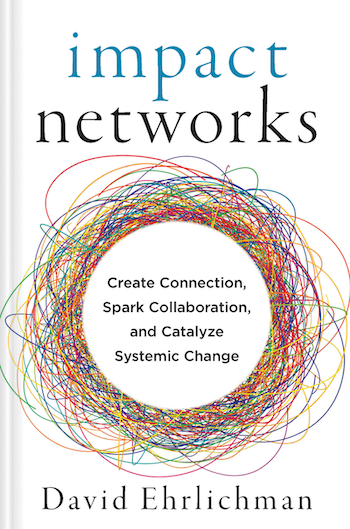
Networks like RE-AMP, 100Kin10, the Defender Network, and CEPN—along with many others you will learn about in this book—were not spontaneous or accidental; rather, they were formed with clear intent. These networks deliberately connect people and organizations together to promote learning and action on an issue of common concern. We call them impact networks to highlight their intentional design and purposeful focus, and to contrast them with the organic networks formed as part of our social lives.[4]
We think of impact networks as a combination of a vibrant community and a healthy organization. At the core they are relational, yet they are also structured. They are creative, and they are also strategic. Impact networks build on the life force of community—shared principles, resilience, self-organization, and trust— while leveraging the advantages of an effective organization, including a common aim, an operational backbone, and a bias for action. Through this unique blend of qualities, impact networks increase the flow of information, reduce waste, and align strategies across entire systems—all while liberating the energy of multiple actors operating at a variety of scales.
All around the world, impact networks are being cultivated to address complex issues in the fields of health care, education, science, technology, the environment, economic justice, the arts, human rights, and others. They mark an evolution in the way humans are organizing to create meaningful change.
To learn more about what impact networks are, how they work, and what it takes to cultivate and sustain them, check out the new book Impact Networks: Create Connection, Spark Collaboration, and Catalyze Systemic Change.
[1]: Niall Ferguson, The Square and the Tower: Networks, Hierarchies and the Struggle for Global Power (London: Penguin Books, 2018), xix.
[2]: Ferguson, The Square and the Tower, 43.
[3]: Anna Muoio and Kaitlin Terry Canver, Shifting a System, Monitor Institute by Deloitte, accessed December 17, 2020, https://www2.deloitte.com /content/dam/insights/us/articles/5139_shifting-a-system/DI_ Reimagining-learning.pdf.
[4]: June Holley has called them “intentional networks” in Network Weaver Handbook: A Guide to Transformational Networks (Athens, Ohio: Network Weaver Publishing, 2012). Peter Plastrik, Madeleine Taylor, and John Cleveland have called them “generative social impact networks” in Connecting to Change the World: Harnessing the Power of Networks for Social Impact (Washington, DC: Island Press, 2014).
Originally published at Converge
David Ehrlichman is a catalyst and coordinator of Converge and author of Impact Networks: Create Connection, Spark Collaboration, and Catalyze Systemic Change. With his colleagues, he has supported the development of dozens of impact networks in a variety of fields, and has worked as a network coordinator for the Santa Cruz Mountains Stewardship Network, Sterling Network NYC, and the Fresno New Leadership Network. He speaks and writes frequently on networks, finds serenity in music, and is completely mesmerized by his newborn daughter.ehrlichman@converge.net
Rising Through Resilience: Dr Froswa’ Booker-Drew On The Five Things You Can Do To Become More Resilient
Watch your thinking. One of my favorite quotes is “Watch your thoughts, for they become words. Watch your words, for they become actions. Watch your actions, for they become habits.” Everything starts as a thought. Pay attention to what you think about yourself and the situations you face. It can determine your results/outcome.
Resilience has been described as the ability to withstand adversity and bounce back from difficult life events. Times are not easy now. How do we develop greater resilience to withstand the challenges that keep being thrown at us? In this interview series, we are talking to mental health experts, authors, resilience experts, coaches, and business leaders who can talk about how we can develop greater resilience to improve our lives.
As a part of this series, I had the pleasure of interviewing Dr. Froswa’ Booker-Drew.
Froswa’ Booker-Drew, Ph.D. is a Network Weaver who believes relationships are the key to our personal, professional and organizational growth. She has been quoted in Forbes, Ozy, Bustle, Huffington Post, Modern Luxury, and other media outlets, due to an extensive background in leadership, nonprofit management, philanthropy, partnership development, training, and education. Froswa’ graduated with a PhD from Antioch University in Leadership and Change with a focus on social capital, diverse women, change management, and relational leadership. She is the host of the podcast, The Tapestry and author of 3 workbooks for women, Fly Away, Ready for a Revolution: 30 Days to Jolt Your Life and Rules of Engagement: Making Connections Last.
Thank you so much for joining us! Our readers would love to get to know you a bit better. Can you tell us a bit about your backstory?
Iserve as Vice President of Community Affairs for the State Fair of Texas. I am responsible for our philanthropic giving, community initiatives and partnerships and some of our educational programming. I am also the co-founder of HERitage Giving Circle and Power in Action, two amazing organizations focused on giving in the Black community of North Texas. Lastly, I’m an adjunct professor at Tulane University and a research affiliate at Antioch University. I am also an author of three books and finalizing a fourth.
Can you share with us the most interesting story from your career? Can you tell us what lessons or ‘take aways’ you learned from that?
I remember very young in my career having a boss that I looked up to and wanted to emulate. She was brilliant, well-respected, and gifted. I spent a lot of time with her due to the long hours of the position. Our families even spent time with one another. As I began to thrive in the work and began to receive recognition for the work, she changed. I moved from a brainstorming partner to being micromanaged and criticized for everything. Sadly, her superiors even commented on the unfair treatment I received but they did nothing to address the mistreatment. I finally decided to walk away because the toxicity was overwhelming and while others were afraid of her and chose not to cross her, I left on faith to start my own business. I learned several lessons. Sometimes difficult experiences occur to show you what you are made of, but they also can serve as a catalyst to push you from comfort to creating your destiny.
What do you think makes your company stand out? Can you share a story?
I’m fortunate to work for the biggest and best State Fair in the country! The State Fair of Texas in twenty-four days not only has more than 2 million visitors but the event supports my work to providing funding to nonprofits in the local area (so proud of how we are changing the narrative in philanthropy), our signature programming that includes building the capacity of nonprofits and businesses in our area, and supporting initiatives in our area that impact education, social justice, economic development, or nonprofit growth. I don’t think people are aware of the many things we do outside of the event year-round which is unique for the industry. In addition to my work at the State Fair of Texas, I am an author and I speak at a variety of events. I also provide training and consulting to a limited number of organizations. I think what makes my work unique is the decades combined of education and experience that contributes to my ability to understand organizational culture, community development, philanthropy, and DEI.
None of us are able to achieve success without some help along the way. Is there a particular person who you are grateful towards who helped get you to where you are? Can you share a story?
I am forever grateful to my mother. My mother endured a lot of hardships and loss. She instilled in me the importance of an education but also the importance of pursuing your dreams. She has been my biggest cheerleader and when I forget who I am, she reminds of not just what I’ve accomplished but the endless possibilities that exist within me. It’s a gift to have a mother that you adore but one who is also your friend and confidante.
Ok thank you for all that. Now let’s shift to the main focus of this interview. We would like to explore and flesh out the trait of resilience. How would you define resilience? What do you believe are the characteristics or traits of resilient people?
Resilience is the ability to bounce back after difficult situations. I think resilient people are courageous and determined. I think at times, we practice resiliency without necessarily equating our actions with being resilient. For many of us, we do what we must because the situation requires it. In some circumstances, we have limited choices, and we choose to push through it because the other options are either limited or non-existent.
Courage is often likened to resilience. In your opinion how is courage both similar and different to resilience?
I think it is important to note that although resilience requires the ability to push through situations, sometimes, we are pushing through because our choices don’t allow for anything else. Resilience is important but I don’t think we talk enough about trauma and that many of us are pushing through very difficult situations without acknowledging the scars that we’ve endured to get through. I’ve heard resilience compared to a fork being bent out of shape only to resort to its original state. Yet, depending on the intensity of the bend, is the fork ever back to its normal state? I think the same can be said about many of us — we bounce back but the bend is so deeply now a part of our consciousness. We aren’t the same, we’ve just persevered and moved on. Is it really courageous or a commitment to doing something we must do even when it doesn’t feel good?
When you think of resilience, which person comes to mind? Can you explain why you chose that person?
Simone Biles is a person that epitomizes resilience. Here is a young woman who smiled and performed in the midst of a traumatic experience that was ignored and yet, was expected by the public to continue to put her body through such intensity while she struggled both mentally and physically. She decided to step back and take care of herself despite the unsolicited comments from others who knew nothing about what she went through, and she placed her needs first. I think she exemplifies that for many of us, we continue to bounce back despite the need to stop, slow, down and process our pain instead of always pushing through. That’s resilience as well.
Has there ever been a time that someone told you something was impossible, but you did it anyway? Can you share the story with us?
I remember in high school meeting with my guidance counselor to sign up for Latin. She told me that “you people don’t take Latin”. What could have easily served as discouragement, I laughed and told her that I was one of those people who would take Latin. I took Latin in High School and was a few hours from a minor in it in college. I didn’t allow her racism or thoughts about me to stop me from doing something I knew I could do. I also recognize that everyone doesn’t do this. There are so many obstacles and barriers and after repeated blocks, it’s easy to get frustrated, give up and get discouraged. It has nothing to do with weakness. I think we all have our breaking points and it’s imperative to understand that what works for me may not apply for you. We can all learn from one another, but we must be aware that our experiences, upbringing, and other factors can impact our ability to bounce back.
Did you have a time in your life where you had one of your greatest setbacks, but you bounced back from it stronger than ever? Can you share that story with us?
There have been a lot of setbacks. I remember applying to a college that I really wanted to go to, and I didn’t get in or applying for a job that I wanted, and it didn’t work out. Those situations can be devastating. The college that said no actually did me favor. I ultimately attended the University of Texas at Arlington which opened so many doors for me to build my leadership and relational skills. At the time, I thought the ‘no’ was the end of the world but actually became the beginning of something special that changed my life for the best.
How have you cultivated resilience throughout your life? Did you have any experiences growing up that have contributed to building your resiliency? Can you share a story?
In February 2021, in Texas, we experienced Snowmaggedon. I moved in with a friend after the heat in my home dropped down into the 30s due to a loss of electricity. I recognize that other parts of the country are prepared for this type of weather, but we were not since cold weather doesn’t really last very long and we typically have heat when it does. I was so grateful for my friend’s hospitality and even while I was there, I was terrified of the same thing happening at her home and the possibility of moving again. This was difficult at a time when very few people had vaccines and we were still understanding COVID’s impact. After four days of this experience, we all went back to work the following Monday as if nothing happened. Some would call it resilience. I thought it was insane. Part of resilience is the ability to reflect and lament. I’ve learned that many times that we practice resilience are often a result of traumatic experiences. Moving on is expected and yet, we must take the time to process our pain and remember. It’s important to mourn because of what we experienced. That’s a lesson I’ve embraced not just during Snowmaggedon but throughout my life. We need to give ourselves the space to do this which can help us build our resiliency. It’s more than moving on. It’s really about learning and healing, too, as a part of the process.
Resilience is like a muscle that can be strengthened. In your opinion, what are 5 steps that someone can take to become more resilient? Please share a story or an example for each.
- Create the space to reflect from the lessons. Processing is important. Otherwise, it isn’t resilience anymore. It’s doing the same thing over and over without learning.
- You need a support system that reminds you of who you are. In the midst of challenges, it’s easy to have a warped sense of who you are. Having folks remind you of what’s in you is necessary.
- Bet on you. Challenges will come. Trauma isn’t always avoidable but what you can do is make sure that you always believe in yourself and your abilities.
- Recognize the traumas that you endure. I think as a society, we are so determined to move through situations and just as muscles need time for recovery to be stronger, you must know when to pause or even stop to heal before moving forward.
- Watch your thinking. One of my favorite quotes is “Watch your thoughts, for they become words. Watch your words, for they become actions. Watch your actions, for they become habits.” Everything starts as a thought. Pay attention to what you think about yourself and the situations you face. It can determine your results/outcome.
You are a person of great influence. If you could inspire a movement that would bring the most amount of good to the most amount of people, what would that be? You never know what your idea can trigger. :-)
I would love to help people understand the power of social capital. My dissertation research is about the importance of building relationships and the role of change. In an environment that has a lot of polarization, I would love to bring groups together to understand the power of their narratives and their identities to create the change we’d like to see in our world.
We are blessed that some very prominent leaders read this column. Is there a person in the world, or in the US with whom you would love to have a private breakfast or lunch with, and why? He or she might just see this, especially if we tag them :-)
I would love to meet Oprah Winfrey to learn from her brilliance and journey; Brene Brown because of her research, and Reid Tracy, the CEO of Hay House because I’d love to work with him.
How can our readers further follow your work online?
Check me out on LinkedIn, Instagram (@DrFroswa) or Twitter (@Froswa)
This was very inspiring. Thank you so much for joining us!
About Savio P. Clemente
Stage 3 Cancer Survivor, Podcaster, Writer, Founder of The Human Resolve LLC, & Board Certified Wellness Coach (NBC-HWC, ACC)
originally published at Rising Through Resilience
Featured image found HERE
Seed + Spark
Sam Chaltain produced the wonderful book Seed + Spark as part of a collaboration between 180 STUDIO and ECKENHOFF SAUNDERS. This is a gorgeous and magical tour, one that I encourage you to explore. I found so much new information here and found the many stories they included to illustrate each chapter’s theme inspiring and insightful.
Sam is offering the book to us at no cost in pdf format, but you may want to splurge on a paper copy - it’s that wonderful!





The Table of Contents reveals the breadth of topics covered:
The authors’ preface outlines the path they will take:
You can download the pdf of the book HERE.
THE WORLD IS CHANGING. WHAT IS IT SHIFTING FROM, AND TO? 180 IS A GLOBAL DESIGN STUDIO DEDICATED TO EXPLORING THIS QUESTION.
We design human-centered environments and curate stories that advance our understanding of the future of learning -- and, by extension, the future of humanity.
Eckenhoff Saunders is a Chicago-based, architecture, planning and interior design firm. Our work is defined by innovative problem solving, client-centered service, technical expertise and pragmatic experience.
We collaborate with diverse organizations in the healthcare, educational, hospitality, non-profit, commercial, financial and industrial markets to develop meaningful design solutions that enhance the lives of those who experience our buildings.
Reimagining a Regenerative Future — Part 3
Creating narratives that are harbingers of life-affirming paradigm shifts
This is an extraordinary time full of vital, transformative movements that could not be foreseen. It’s also a nightmarish time. Full engagement requires the ability to perceive both. ~Rebecca Solnit quoted in Brainpickings
We live in a profoundly damaged world, a wounded and a bleeding planet. The ‘great acceleration’ of the Anthropocene founded on the human hubris of controlling and subduing nature, infinite growth driven by endless extraction and ecocide, and a deeply colonial and racist mindset has brought us to this cusp of simultaneous systems collapse — of economies, polities, societies, communities, ethics, values, and religions.
Polarization, fracture, and fragmentation are manifesting in all their destructive dimensions within and between nation-states. The ostensibly boundary-less, ubiquitously connected globalized world is erecting boundaries within national borders — between its own citizens, driving neighbors against neighbors, turning citizens into vigilantes. Growing injustice and inequality coupled with social, racial, communal, and religious rifts are tearing apart the fabric of most nations.
The richest 1% owns half the world’s wealth. Billionaires wealth rose an approximate of $10.2 trillion amid Covid crisis. “While the full impact of the COVID-19 pandemic is unknown, the World Bank estimates that an additional 88 million to 115 million people will fall into extreme poverty in 2020, with the total rising to as many as 150 million by 2021.” Mega-corporations like Amazon, owned by the richest man in the world, are known for its bruising work environment. Rich and powerful nations are blocking waivers for Covid-19 vaccine patent rights thus denying vaccination to millions in the face of a global pandemic. Global North nations are destroying less powerful nations for control over natural resources, cheap labor, and land. The cult of consumerism, accumulation, and excess are devastating the planet. Fundamentalism and authoritarianism are on the rise across the globe. All for the sake of power, profit, and privilege.
Is it any wonder that this pathologically unequal world is falling to pieces? The enforcement of deregulated capitalism with its associate free market ideologies have crashed the world’s systems — economically and ecologically. The imposition of structural adjustment programs on the global South countries have effectively destroyed the development that they had sought to make post colonialism.
A combination of austerity, privatization, and deregulation have destroyed the basic infrastructure in most countries. Corporations, freed of all regulations and responsibilities, are recklessly destroying the environment, scouring the planet for the most exploitable labor and that last drop of oil with ever more invasive and extractive technology. The world is literally going to hell in a handbasket.

It is easy to imagine that the world is being run by a handful of megalomaniacs and plutocrats. The underlying narratives of capitalism, free-market, globalization, and growth have created the fertile conditions and space for the rise of such totalitarianism. One wonders what happened to the story of development and progress for all. However, the truth is that the world fell prey to the dangers of a single story.
Since 1980, the global economy has grown by 380%, but the number of people living in poverty on less than $5 (£3.20) a day has increased by more than 1.1 billion. That’s 17 times the population of Britain. So much for the trickle-down effect. ~Jason Hickel, Forget ‘developing’ poor countries, it’s time to ‘de-develop’ rich countries, 2015
If we peel off the layers and go back in history, we can trace the roots of the narrative running the show for the past 500 years to imperialism and colonialism, Enlightenment and the Industrial Revolution, rise of capitalism and the free market. Today’s ‘universalized’ and homogenized story of development and growth was a western concoction imposed on the rest of the world as a part of the imperialist project of colonization and continued through globalization and neo-colonialism. The rest of humanity was forced to forfeit and forget other ways of being on and relating with this planet and all sentient beings.
However, as our civilization faces imminent collapse and the impending existential crisis of the sixth mass extinction, it is becoming clear that we must reclaim, re-member, and revive those lost and abandoned ways. For centuries, the indigenous people have been turned into fugitives in their own land in the name of development, rendered homeless in the name of growth, brutally persecuted when they claimed what was rightfully theirs.
Even as we teeter on the edge of unprecedented ecological disaster, it is worth remembering that while comprising less than 5% of the world’s population, indigenous people protect 80% of global biodiversity. One of the earliest forest conservation movement in India took place in 1973. Called the Chipko Movement, it saw primarily women hugging the trees to prevent them from being felled for logging. Sunderlal Bahuguna, a Gandhian activist, brought this nonviolent movement to the world’s attention with the rallying cry, “Ecology is the permanent economy.” This was 1973.
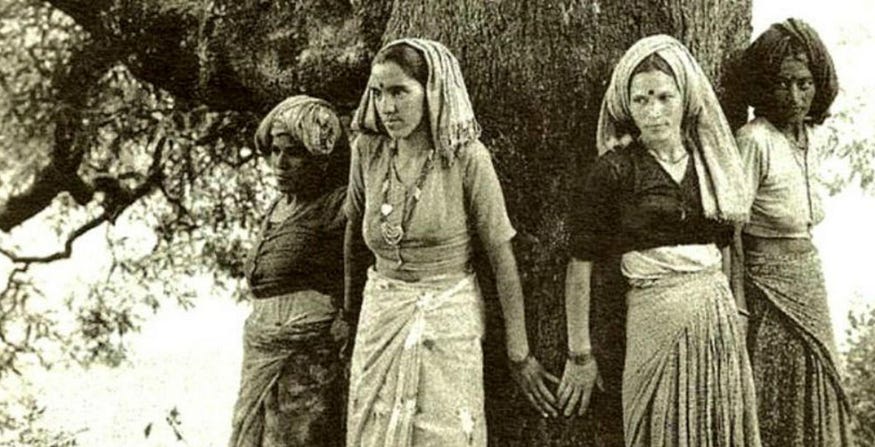
The single unifying issue facing Indigenous Peoples everywhere is how to protect their territories and stop the “asset stripping” that robs them of their livelihoods and the foundation of their cultures. Without land and control of their assets, Indigenous Peoples are destined to remain the world’s poorest communities — with the worst health, highest mortality rate and shortest life span. ~The Indigenous Movement
We know that life thrives on diversity. Any forest ecosystem is a teeming hub of myriad visible and invisible life forms from magnificent old trees to the minutest of fungi to the mycorrhizal networks beneath the soil. Yet, the narrative of Eurocentric development has continuously sought to eliminate all forms of diversity — from different cosmologies to unique ontologies and epistemologies, from diverse forests and farms to different economies. It constantly tried to subsume varied ways of being, seeing, and living into its mega-narrative of western universalism, ironing out all uniqueness through brute force.
The hegemonic narrative emanating from a mechanistic, dualistic, utilitarian, hierarchical, and colonial view of life, enforced a distorted and superficial homogeneity in the name of efficiency, productivity, and development on all of civilization. It also imposed a fabricated classification of humanity that impacts billions to this day. The sole aim was and is the accumulation of power and capital by a few at the cost of billions.
Under this industrializing force, thriving forests gave way to mega-monocultures for the sake of agribusiness. Homes of critically endangered wildlife became vast palm oil plantations. Supply chains expanded across the globe stretching from China to Walmart’s doors. Local ecosystems and economies (in the global South) were brutally destroyed to open up international markets in the name of free trade, rendering millions homeless and helpless thus adding to the pool of cheap and disposable labor. Indigenous tribes were rendered homeless as their land was expropriated for mining, logging, and other ills.
The economic, political, and social systems originating from this narrative literally went about exploiting, expropriating, and extinguishing life. Because the founding narrative never valued the web of life with all its abundance and breathtaking beauty, interdependence and inherent intelligence, there were/are no qualms about snuffing it out.
The mindboggling annihilation we have wrought in the name of development is truly unbelievable. The saddest part is that it is not within human capacity to bring back extinct species, to rewild the coral reefs in all their magnificence and multihued diversity, to prevent wildfires from consuming forests and wildlife. We are ‘gambling with what is irreplaceable and precious,’ to use Naomi Klein’s words. But nature is resilient, generative, and autopoietic. Minus human-made destruction, life will assert herself. But for that, we need to let go of our old narrative and embrace a narrative that is regenerative and pluriversal. A narrative that pays homage to life and thus becomes that catalyst and cornerstone for creating structures and systems that are conducive to life.
The globetrotting pandemic ripped apart the façade of progress and development to reveal the papered-over brokenness of our current planetary systems; it also underscored our ineradicable interconnectedness and interdependence with all sentient beings on this planet. However, this seems to have gone unnoticed by those in power. They are once again busy trying to use the crisis to push through policies and programs that people would not accept during normal times.
Naomi Klein in The Shock Doctrine: “In moments of crisis, people are willing to hand over a great deal of power to anyone who claims to have a magic cure — whether the crisis is a financial meltdown or… a terrorist attack.” Those at the helm of world affairs today are being driven by their basest instincts geared towards profit, privilege, and power for a few. We are experiencing a global crisis of leadership, a crisis of conscience, and a crisis of consciousness. And these multiple crises are manifested in the economic, political, and social structures and processes at play today.
However, ordinary people are no longer buying the narrative. From students to farmers, from housewives to indigenous tribal members, they are out in the streets demanding their right to a just, meaningful, and dignified life. The past decade has, therefore, also become the decade of movements. From #OccupyWallStreet to #ExtinctionRebellion, from #FarmersProtest to #FridaysForFuture, from #BlackLivesMatter to #DemocracyforMyanmar. These lists of movements from 2020–2021 are telling a story of an emerging civilizational order vastly different from the old one. They are showing us that the old narrative of European male hegemony and the privilege of power is dead. Those benefitting from it will use every arsenal at their disposal to maintain the status quo, but the war is already lost.
We are experiencing the collapse of the current narrative in the face of global crises. And when narratives collapse, revolutions happen, new shoots of hope arise, new stories are created. And a new world order emerges. It is in our hands to reimagine our civilizational narrative. To throw off the yoke of the old order with its narrow Western worldview and co-create a pluriversal narrative — one that encompasses many cosmologies, ontologies, and epistemologies. A cultural meta-narrative that recognizes and respects the innumerable ways of being, seeing, sensing, and knowing of humans and other-than-humans. One that resonates with the astoundingly diverse and stunningly beautiful web of life. It is time to reimagine new narratives for a civilizational evolution that is life-sustaining.
The new narrative is already arising from the grassroots, from the fringes, and the margins. They are harbingers of the voices of people who have been marginalized and delegitimized for centuries — the blacks, the indigenous, the women, the farmers, the students, the activists, the transgenders. The bearers of this new narrative are the rebels, renegades, radicals, and revolutionaries — they are the visionaries and the imaginal cells of a future taking shape in the present.
They are the ones the status quo is most afraid of. No wonder the privileged are doing all in their power to quell, suppress, and oppress the rising tides of discontent and truth. From incarceration to outright killing, every gruesome and chilling action is being taken to keep the truth from bursting through the carefully erected, centuries-old veneers of deception, duplicity, and deceit.
Those in power are afraid. They have too much to lose after centuries of accumulation and grabbing. They cannot let go with grace. As Otto Scharmer wrote: “The image of the Ever Given — needing to unload its cargo in order to get unstuck — represents in a microcosm the collective impediment that rich countries and Western civilization embody today: holding on to stuff and refusing to share with those who are on the other side of the social divide.” This applies to all those who are benefitting from the status quo.
“By refusing to risk its way of life, by rejecting the idea that the powerful might have to sacrifice for the common good, it clings to a set of social arrangements that allow it to monopolize progress and then give symbolic scraps to the forsaken — many of whom wouldn’t need the scraps if the society were working right.” ~Anand Giridharadas, Winners Take All: The Elite Charade of Changing the World
Joanna Macy spoke about this period as the Great Turning — a transformational moment in human history — when the foundations of the Industrial Growth Society would finally totter and crumble, and a new Life Sustaining Society will arise. However, this new society will not be ushered in willingly by those benefitting from the old one. The shift will need to be envisioned and co-created by communities and collectives of individuals from all walks of life staking a claim to this planet and standing up for the right of all sentient beings.
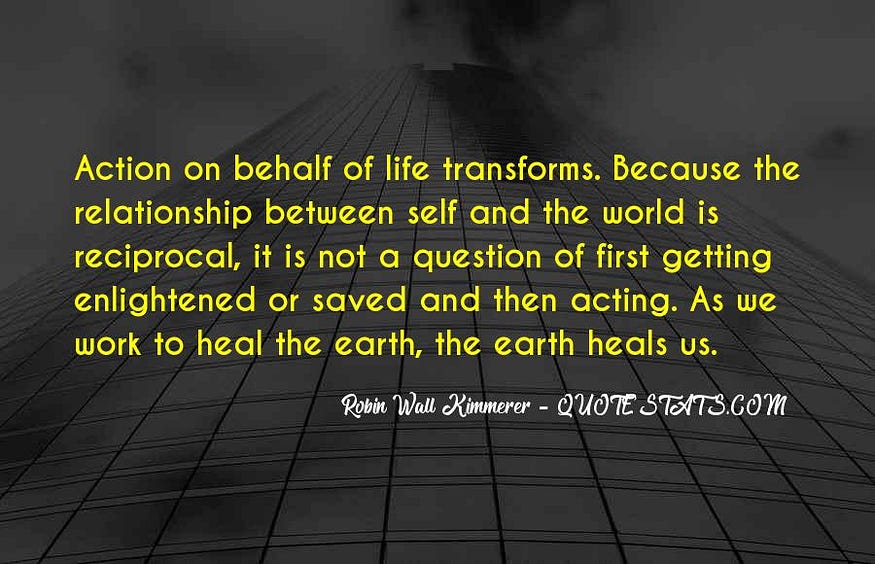
Our civilization’s evolution has been a spiral of emergence from one level of convergence and complexity to the next order of evolutionary complexity. And with each evolutionary step, the fundamental narratives have shifted. The shifting of narratives has led to cultural and paradigm shifts — in perceptions, worldviews, beliefs, values, and norms — that have always challenged the status quo, often drawing the wrath of the powerful and the privileged.
Darwinism and evolutionary biology challenged religious believers; Galileo’s heliocentrism (Earth revolving around the sun) and Copernicanism (Earth rotating around the sun) dismantled the belief that the earth was the center of the universe; Mahatma Gandhi’s non-violence movement as a strategy for social change shifted the trajectory of British imperialism in India. Thus, narratives are extremely powerful. They can make or break nations, countries, societies, and our planet.
What if the new narrative we co-create is founded on the bedrock of life-affirming values and actions?
In this liminal space between stories where one world is dying and the other is struggling to be born, lie the potential and power to reimagine and rejuvenate. The power to break away from the hegemony of universalism and co-create a new narrative that counteracts all that is noxious in our old story. A narrative founded on the principles of Interbeing, Pluriversality, and Abundance need to be told.
Stories create our worlds and worldviews. They help us to make meaning in a seemingly random and arbitrary universe. Without stories to lean into, we would not be able to cohere with intentionality and collective energy. Stories become the basis of cultures; thus, new narratives have the power to shift cultures, and cultural forces have the power to drive political and systemic changes.
For good or bad — narratives shape and give rise to norms, values, structures, and processes, which when repeated often enough become the culture — of nations, societies, communities, organizations, groups, or teams. After a point, the underlying narrative is forgotten, and the culture becomes “the way things are done here”. These then go on to create the bedrock of societies, polities, economies, and ethics.
Hence, if we hope to bring about transformative, paradigm shifting change, we must replace the old stories with new ones embodying the beliefs, values, norms, and ethics of a regenerative future. We must move away from narratives legitimizing extraction, exploitation, expropriation, ecocide, and racism to ones that are regenerative and life-affirming. It is not enough to just highlight what needs to change. It is essential to collectively co-create a narrative that embodies ‘a world where many worlds fit.’
It is also crucial to define what such a narrative CANNOT be before we can define what it will be:
1. It can’t be a single, universalized narrative.
2. It can’t be about human centrality and male supremacy.
3. It can’t be a decontextualized model of development imposed on all.
4. It can’t legitimize the vested interests of a few individuals and nations.
5. It can’t marginalize or delegitimize any cosmology and ontology.
The new narrative reifying a regenerative future must be:
1. Contextual and pluriversal, and yet profoundly global.
2. Based on the principles of ‘reparative futures.’
3. Centered on decolonizing the future and the imagination.
4. Focused on generativity and thrivability, not on infinite growth on a finite planet.
5. Founded on our inherent and indelible interconnectedness with the web of life.
~What narratives do we want to tell now that will allow us to hold space for and co-create a regenerative future?
~What will be the edifices and mainstays of these narratives?
~What kind of leaders do we need to become amplifiers and stewards of these narratives?
~What do we, as individuals and collectives, need to do to actualize and manifest the regenerative future, ‘a world that works for all’?
Article originally published here in The Age of Emergence
You can read the first two parts of the article here:
Reimagining a Regenerative Future – Part 1
Reimagining a Regenerative Future – Part 2
Sahana Chattopadhyay — speaker, writer, facilitator, and story-seeker. A scribe to an emerging era, trying to make sense from chaos and collapse, holding space for fearless dialogues, and catalyzing transformation towards a pluriversal planet. For more of her work: https://linktr.ee/sahana2802
PLEASE DONATE to help Network Weaver continue in it’s mission to offer free support and resources to networks worldwide.
Who Decides Who Decides?
Have you ever started a group that started with enthusiasm and fizzled out over time? I have. Even more often, I have joined groups that other people started… that fizzled out over time.
So, what happened? If your experiences are similar to mine, here are some typical stories.
- Groups start out with a vague understanding of what we’d do together and then we don’t do things because first we talk… and talk about what we would do if we ever actually started. Needless to say, we don’t start but fade away.
- Someone starts doing things. Somehow the doers take over and there’s no room to plug in. We’re all grateful but there’s also no room to talk about whether what they’re doing fits with the rest.
Self-organization is powerful because it has the potential to align a lot of people and their passion with each other. Yet, self-organization doesn’t mean having “no rules”.
The invisible force that makes or breaks a new group is governance. Governance doesn’t sound exciting, and it reminds everyone of boring board room meetings. Yet, the truth is that governance is everywhere - every group that makes decisions gets to those decisions somehow - whether we like that way of making decisions or not.
So how can we introduce just enough clarity and process to make governance inclusive, easy and unleash the power of self-organization? There’s a new book that describes exactly that. It uses the tools from sociocracy - a consent-based, heavily participatory, and co-creative decentralized governance system - and lays out how to start a group and put decision-making and a good distribution of responsibility and actions into place step by step. The book has printable meeting templates of the first 3 meetings that will support your new group and launch it well!
- In the first meeting, a group establishes how they operate and what they do. They celebrate being a group and spend time getting to know each other.
- In meeting #2, a little bit of structure is established so everyone knows how to contribute, and the group can plan for the future in an accountable way.
- Meeting #3 is all about getting started and reviewing what we’ve done so far - only if we review our processes can we make sure everyone’s needs are considered and we are intentional about how we spend our time.
The process works the best for groups of 3-12 people who are actively involved. It can be used to start or to re-kindle a group.
The book comes with a resource page of printables, demo videos and an interactive forum.
Ted Rau is a trainer, consultant and co-founder of the non-profit movement support organization Sociocracy For All.
He grew up in suburban Germany and studied linguistics, literature and history in Tübingen before earning his PhD in linguistics there in 2010. As part of that career, he moved to the USA and fulfilled a long-held wish to live in an intentional community. Since a career in Academia required more moving around than he was willing to do, he left Academia. Ted identifies as a transgender man, and he is a parent of 5 children. He lives with 70 neighbors in Massachusetts in an intentional community. Link to more info on sociocracy
PLEASE DONATE to help Network Weaver continue in it’s mission to offer free support and resources to networks worldwide.
Organizing Liberatory Networks: An Invitation
These are emerging reflections on the work we have done within networks, which includes networks for and led by people of color, multi-racial networks, queer networks, immigrant networks, and other groups that have come together to shift systems towards equity and liberation. In particular, we want to name the leadership of Black and Indigenous women and femmes within these networks who contribute wisdom and emotional labor to support the work of these groups. We are also grateful for the wisdom shared by The Queen Sages, Child Care for Every Family, Protecting Immigrant Families, All Above All, Transformative Leadership for Change, Center for Innovation in Worker Organization and their Women Innovating Labor Leadership Program, and all the participants of the movement network organizer pilot.
The events of the last year, continuing to this year, have called on us to deepen practices that center intersectionality, solidarity, racial justice, and mutual aid. Organizers have been working one-on-one with people in communities and side-by-side with other organizations to support people’s immediate needs and build movements for love, dignity, and justice. Along the way, organizers have deepened their praxis on transformational organizing and working in networked ways. (We think of praxis as having a stance of discovery and learning as we experiment with and embody aligning our values, beliefs, and worldviews with our practices, mindsets, and ways of being.)
This blog shares what we are learning from organizers and grassroots groups about organizing with and in networks. These insights are constantly evolving and changing so we invite organizers, networks, capacity builders, and those who fund this work to learn, practice, and deepen our learning together on how to catalyze and shape liberatory networks. We are in a moment of possibility where we can hold the learnings from the last year(s) and continue to build, nourish, and sustain networks that disrupt conditions in the sector to advance love, dignity, and justice.
What Are Liberatory Networks?
Over the last decade, we’ve learned a lot about how to nurture and sustain powerful, equitable networks (by network we mean collective efforts that seek to align people across constituencies, geographies, issues, or movements to accomplish something no individual entity could do alone). Allen Kwabena Frimpong at AdAstra Collective has introduced us to different types of networks such as the decentralized, self-organized network with many overlapping clusters and a strong periphery. Folks like Deepa Iyer and June Holley have helped us to understand the roles individuals play within networks and movements, such as “the guardian” who creates the conditions for the network to thrive, or “the healer” who mends harm within it. Finally, organizers have helped us understand the essential capacities networks need to be sustainable and advance equity, such as weaving relationships that center equity and trust or managing polarities, conflict, and the distribution of power and resources.
As working in networked ways becomes the norm, we are seeing professionalization, technocratization, and the loss of the relational soul of many of our networks. Thus, we want to elevate what we are learning from folks of color and queer folks who have been catalyzing, co-creating, and evolving networks that embody transformation at the personal, organizational, and network levels. These networks are interdependent, relational, evolving ecosystems where we can be our whole selves, be mutually supportive and accountable, and co-create new futures—where both what we are doing together and how we are doing it are important and integral. In order to distinguish the work of these groups from conventional networks, we refer to them as “liberatory networks.”
Liberatory networks create space for long-term visioning, self-awareness, naming and addressing the oppression that is replicated in our strategies, and the healing of personal suffering. They support individuals to ground in their ancestral and spiritual roots. They have mechanisms to hold people through traumas, triggers, harm, and internalized oppression in ways that restore relationships and connection. Member organizations are actively doing anti-racism/oppression work internally to show up in solidarity with others and in accountability with community, staff, and board.
These powerful networks are disrupting what we have been taught, and now assume, about what strong leadership and operations should look like in the nonprofit sector. Many networks and organizations are moving from solo charismatic leaders to shared leadership, from “power over” to co-powering, from top-down knowing to collective meaning-making, from defaulting to habits of white supremacy culture to practices centering BIPOC leaders and advancing the collective liberation of all people. Through these practices, liberatory networks, in turn, enable us to advance equitable systems change and shift culture overall.
Invitation to Intentional Praxis
As Stacey Abrams points out, now is the time to build the infrastructure we need to have the power to bring forth our most radical imaginations for a new society. This infrastructure will be and already is networked with clusters of organizations and individuals that are interconnected. One organization or short-term coalition cannot meet growing community needs or support healing from trauma; cannot absorb, sustain, or deepen the engagement of millions of people who want to participate; and often cannot transform society. Liberatory networks allow us to build, aggregate, and wield more power. They can provide a space to reconnect and heal from racialized harm, isolation, burnout, competition, fragmentation, and campaign-to-campaign exhaustion. They can enable us to collectively deepen our praxis towards liberation.
Organizers are important bridgers both across and within liberatory networks. When organizers have space to work with community and network members, they can co-create liberated, powerful, and creative spaces that inform and shape liberatory networks. When included in developing bold visions and strategies at the network level, organizers bring these ideas into relationships and action on the ground.
Organizers are already drawing connections within their work and learning about and co-creating liberatory networks through their own experimentation. At the same time, organizers and other network members, such as capacity builders, facilitators, and funders, could be stronger partners and architects in building and nurturing the infrastructure we need for a liberated future if there were more spaces for intentional praxis and broader sharing of these learnings across – in addition to within – networks.
What We Are Learning About Organizing Liberatory Networks
The following are praxis seeds for organizing in networked ways to advance liberation. We draw on stories shared through two pilot classes co-authors Susan, Trish, and Robin did with 29 organizers, a convening we did with grassroots leaders and funders, and our own experiences partnering with organizing groups and networks. We invite you to contribute your own insights as well so that we can continue a dialogue about organizing liberated networks. What is your praxis? How can we continue to evolve our practices to get closer to our aspirations of liberation and racial justice?
1. Centering racial equity and healing, particularly addressing and repairing inequitable distribution of power, resources, and labor
When working in and across networks, organizers are being thoughtful and transparent about how to marshall resources, recognition, and capacity equitably given current and historic racism and intersecting oppressions. Organizers spoke to three ways that they are doing this. First, several organizers shared how they use somatic practices and storytelling to support BIPOC members to develop a racial analysis, connect to ancestral wisdom, and embody what it means to center themselves. As one example, an organizer described this somatic stance: “I have my hands out; I’m open. I have one foot forward and one foot back; as a male Latino, I’m listening to women and courageously taking space against patriarchy.” Second, when individuals are grounded in their whole selves, organizers can facilitate conversations about the differences among groups. One person, for instance, shared how white and BIPOC caucuses helped develop radical relationships across racial groups. Lastly, organizers in networks are addressing inequitable distributions of labor, resources, credit, and compensation. Women of color and Black women and femmes, in particular, often hold emotional labor and relational work in networks. Participants at the NEST1 convening discussed ways to shift this dynamic by compensating women for this invisible labor, sharing or shifting responsibilities to white men, and prioritizing regional tables that center leaders of color.
Opportunities for Praxis Exploration
- Centering people of color, blackness, and indigenous peoples while de-centering whiteness
- Building a foundation of trust to recognize power differences and have courageous conversations
- Embodying love, human dignity, and compassion
- Unpacking levels of oppression while recognizing the historic social construction of racism
- Moving from oppression to liberation by reconnecting to source, story, body, and emotions (thanks to Monica Dennis for this framework)
- Attending to who does the emotional labor and how we share that or rectify it
- Managing the tensions between addressing immediate needs of communities of color and laying long-term foundations for transformation
- Reflecting on where our movements have failed to embody our values and consciously co-create the conditions for embodying them moving forward
- Centering reflection, learning, repair and re-creation as a continuous and loving process.
2. Doing the inner work needed for personal and interpersonal transformation, which is critical for nurturing radical relationships and our interdependence
There are two areas of inner work that are top of mind for organizers working in networked ways. The first area is nurturing radical relationships and connections within and across movements. Two of the organizers we work with shared that, when they had the opportunity to develop a shared political analysis and vision with a people of color caucus over the course of a two-day retreat before collaborating with the broader network, it enabled them to nurture trust, recognize shared values, and find ways to honor each person’s and organization’s contribution to the movement. Another organizer shared how they connected two groups that would not normally be allies by asking a powerful question: “What does home mean for you?” This question later led to a storytelling organizing process across multiple organizations, supporting both individual and group transformation.
The second area is embracing generative tensions as a liberatory practice. These tensions are often framed as polarities and include abundance and scarcity, conflict avoidance or expression, centralization or decentralization, focusing nationally or statewide, transparency and information overload, accountability for racialized harm and cancel culture, calling partners into a radical stance or compromising for an interim win, and so many more. Organizers regularly navigate these tensions as their context continuously evolves. This involves reframing disagreement from being divisive to being generative. Navigating tensions can deepen our collective capacity to make meaning of complex issues. It can help groups discern when our desire for resolution is rooted in our discomfort with holding multiple and different ideas (so we could get more comfortable living with conflict) and when this desire is needed to maintain the integrity of the network. Organizers further shared that they use racial healing, restorative justice, conflict resolution, polarity management, forward stance, and many other approaches to name and reconcile tensions and realign and heal networks and relationships.
Opportunities for Praxis Exploration
- Integrating head, heart, and body
- Embracing change and emergence
- Nurturing a whole person and their ways of being
- Creating space for relationship building
- Recognizing difference, naming tensions and polarities, reconciling conflict generatively, and healing harm
- Tending to well-being and sacred grounding
- Supporting self and community care
3. Shifting to more emergent and collective ways of understanding and navigating complex systems change
Organizers regularly engage community and network members to analyze systemic root causes and identify leverage points for transformation. They use a range of practices like storytelling circles and collective vision murals to do so. During the pandemic, organizers became pros at adaptation – moving to digital organizing, virtual policy advocacy, and mutual aid to address emerging community needs. They built in check-ins, yoga, breathwork, meditation, and other practices to support themselves and community members to be resilient. Organizers are always adapting as they seek complex systems change including:
- Tending to both campaigns and the sustainability of people, organizations, and the network overall
- Figuring out when all network members need to be in agreement and when a critical mass of a network can move things forward
- Having ways for parts of a network to opt in or out of democratic processes
- Flexing between decentralized experiments with liberated models and coordinated targeted campaigns
NEST convening participants also shared how networks are themselves systems, and people need well-resourced spaces to disrupt white supremacy, model liberatory ways of being with each other, and translate learnings from successes and failures without judgment.
Opportunities for Praxis Exploration
- Forging interconnectedness and interdependence and breaking silos
- Shifting from scarcity to abundance
- Embracing change and emergence while letting go of certainty and the idea that healthy networks are static
- Developing a complexity mindset, which means assuming disagreement, unpredictability, ambiguity, and emergent patterns
- Listening deeply, holding multiple perspectives (i.e., individual, organization, and network), and generating nuanced alternatives
- Experimenting as a way to take risks, innovate, and learn
4. Sharing leadership and decision-making power in ways that lift up Black and Indigenous peoples and other people who have historically been excluded from power
Sharing leadership is core to transformative organizing in networks. What this means for organizers is supporting community members to recognize and develop their own leadership, and centering Black, Indigenous, and other people of color in leadership (both of which are critical in non-network contexts as well). For instance, women of color organizers Trish Tchume and Aida Cuadrado Bozzo have worked with groups of organizers to navigate complexity and emergence (which are typical for networks), in support of a shared vision, build teams that are intentional about staying in “right relationship,” and call in community members to a liberatory stance.
Sharing leadership and power also means creating transparent feedback loops, opportunities for community members to practice different leadership roles within a network, and spaces to collectively connect to heart, body, and spirit. For instance, one organizer shared how they used salsa dancing to invite people to show up as their full self and see the different roles in a movement (e.g., lead, follower, creating space, etc.). As another example, organizers are engaging community members (who are compensated for their time), to gather community perspectives, stories, and experiences; shape priorities of the network itself; review messaging, materials, and tools that are used with community members; and co-develop actions on shared campaign tactics.
Opportunities for Praxis Exploration
- Recentering BIPOC leadership, particularly as decision-makers and liberated gatekeepers
- Cultivating not one leader but many leaders who can trade-off and play different roles
- Engaging and developing leadership at many points and levels of authority in the system
- Systems and processes for shared meaning making, co-creation, and mutual accountability
- Connect to self as a whole person and developing trusting relationships with others
- Sharing decision-making power, credit, resources, influence, and turf with attention to liberation, equity, and reparations
- Collectively determining how funding will be raised, used, and distributed in the network
5. Creating space to connect to our multiple wisdoms and intelligences (e.g., ancestral, spiritual, natural, creative, somatic, etc.)
Some organizers have long histories of connecting community and network members to multiple wisdoms and intelligences (e.g., theater of the oppressed as a somatic and artistic practice for political education). Other organizers spoke to how challenging it is to shift organizing patterns to make space for spirituality, emotions, artistic and experiential practices, and bodywork. Many organizers strive to hold themselves, partners, and community members as whole people in their full dignity, which means supporting people to develop their innate talents, decolonize, heal, and express themselves in the ways that make sense for themselves. This is critical to transformational organizing and to organizing liberated networks. Trish Tchume and Aida Cuadrado Bozzo, with Viveka Chen, Zuri Tau, Holiday Simmons, and Susan Wilcox, have developed “Calling In & Up: A Leadership Pedagogy for Women of Color Organizers,” which supports organizers in creating liberated spaces that embrace multiple wisdoms. The guide shares a range of spiritual, cultural, and somatic practices to decolonize spaces, create the conditions to live into liberation, and build and deepen relationships.
Opportunities for Praxis Exploration
- Recognizing, lifting up, and engaging wisdom in multiple forms including experiential, ancestral, spiritual, natural, somatic, art and culturally-based forms of expression and meaning-making
- Embracing being a co-learner and co-creator rather than or in addition to being an expert
- Rooting into a values-based frame
- Shifting approaches to organizing that disproportionately value analytical, intellectual, and logical forms of knowing
An Offering for Praxis
This blog shares what we’ve been learning from organizers and grassroots groups about organizing liberatory networks. We invite you to share your learning, insights, and questions so that we can continue a dialogue about organizing liberatory networks together.
How are your networks embodying liberatory network approaches?
Please share your reflections in the comments below!
1The Networks for Equitable Systems Transformation (NEST) convening took place across 2.5 days in 2019. The group consisted of network funders, participants, and intermediaries who shared space and surfaced challenges, opportunities, and questions related to their work in networks. Read more about the design of the NEST convening and key takeaways from participants here.
2Here we are not referring to an organization’s membership base since not all organizations have a membership model although there can be overlap when community members are also members of an organization.
We'd like to thank Panta Rhea for supporting the movement network organizer pilot and our efforts to share this learning with you through this blog.
About the Authors
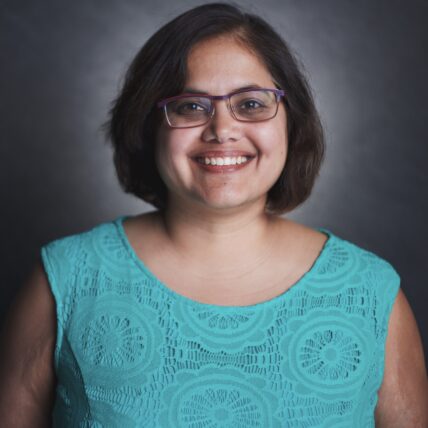
Susan Misra’s life purpose is to work with advocates and activists to actualize their visions and values of justice and equity in their relationships, structures, and work today. She has over 20 years of experience in developing equitable, sustainable organizations and networks for movement building.
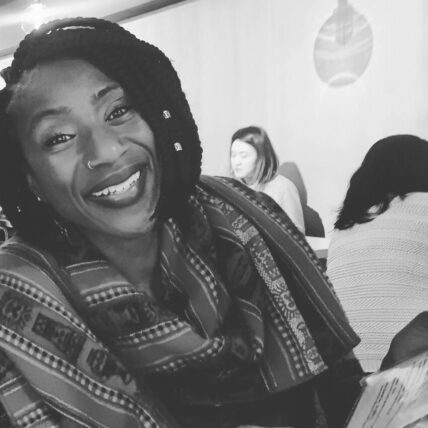
Trish Tchume is the Leadership Program Director for Community Change and comes with almost two decades of experience helping everyday people see their role in the gorgeous project of building a more just and equitable society.
Robin Katcher strengthens organizations, leaders, and networks on the front lines of social change. Her deep experience in social justice movements – as an organizer, educator, legislative advocate, and board member – informs her rigorous approach to building powerful organizations, leaders, and networks.

Natalie Bamdad joined Change Elemental in 2017. She supports Change Elemental consulting engagements through research, analysis, and project management. Her core areas of expertise include strategic planning and program design and implementation.

Natasha Winegar is a researcher, writer, communications specialist, and coach. She joined Change Elemental in 2013, and is our Research & Communications Manager. She collaborates on our consulting, coaching, and learning engagements, bringing a blend of curiosity, imagination, strategic insight, and a commitment to love, dignity, and justice.
Originally published at ChangeElemental.Org
Banner Photo Credit: Cuba Gallery | Flickr
by SUSAN MISRA, TRISH TCHUME, ROBIN KATCHER, NATALIE BAMDAD, NATASHA WINEGAR
5 Strategies for Combining Equity with Sociocracy
The key promise of sociocracy is that all voices matter. In reality our current sociocracy practices are not enough to overcome the way society systemically oppresses the voices of people from poor, non-white, transgender, disabled, et cetera, backgrounds.
Examples of how this dynamic can show up
- Everyone speaks in rounds at a meeting but participants only acknowledge ideas brought up by men
- An all white human resources circle seeks input from organizational members but deprioritizes a Black member’s request to strengthen the organization’s anti-racist policies
- A school leadership circle makes decisions by consent but the circle doesn’t have any student members
In all these examples, people were using sociocratic practices but were not truly listening to everyone. In other words, they were not governing equitably.
In this article I define equity, make an argument for why combining equity and sociocracy is so powerful, and share five strategies for embedding equity into sociocratic governance.
What is equity?
Equity is both an outcome and a process. The outcome is that all people are equipped to thrive as happy, healthy, and impactful citizens of the world regardless of what class, race, gender, caste, abilities, etc. people have. The process is that those most impacted by inequity lead in setting priorities, deciding where to invest resources, and shaping policies. People who have been most oppressed are the ones who best understand the problems and therefore best understand how to break down systems of oppression for the benefit of everyone’s collective liberation.
Equity is different from equality because equality has often been used to describe giving everyone the same opportunities or the same support, but what is equal is not always fair. A child growing up poor, for example, will need a lot more financial resources from the community than a child who’s growing up rich.
Why combine equity with sociocracy?
When we combine equity with sociocracy, we create a powerful tool for change.
One, combining equity with sociocracy makes it possible to fulfill sociocracy’s promise of all voices matter.
Two, I’ve found that social movements and organizations often struggle because more common governance frameworks such as majority rules or unclear consensus processes are inherently inequitable.
So while sociocracy alone is not enough to overcome centuries of oppression, it does provide a framework that makes equity possible in ways more common governance frameworks do not.
Examples of how sociocracy already supports equity
- Decisions by consent instead of by majority rules means no “minority” can be overpowered (I put “minority” in quotes because within the U.S. context, many white people call people of color “minorities” when in reality we’re in the global majority)
- A proposal process that starts with understanding and that ends with evaluating lowers the chances of people causing unintended harm
- Clear aims, domains, and roles makes power transparent and allows people to easily step into leadership roles, participate in decisions within domains that most impact them, and hold people accountable to agreed upon aims
- Organizations drawn to sociocracy, such as worker coops, ecovillages, and nonprofits, tend to be organizations that value shared power and social good
- Sociocracy’s entire ethos is to include all voices so this principle is already aligned with the practice of equity
What are strategies I can use to combine equity with sociocracy?

1. Understand your context
Understanding your context is understanding the circumstances surrounding the actions you take. Elements of context include but are not limited to:
- your own identity
- where you live
- who’s in your community
- what are your communities’ strengths and challenges
- what’s the history of your peoples and place
- who else is working on issues that connect with yours
You must be aware of context in order to accurately diagnose where inequity is systemic and how you can contribute to dismantling it.
My context is that I live in the United States of America, specifically New York City, the unceded territory of the Lenni Lenape, Canarsie, Shinecock, and Munsee peoples. Our city is incredibly diverse in race, culture, sectors, interests, et cetera. I work specifically in youth-led and intergenerational community organizing, where we’re youth leaders and adult allies working together to ensure that young people are equal participants or fully leading in all spaces where decisions about young people are made. I do this as an Asian American adult woman who experienced many of the inequities my communities’ young people have experienced, from racism to sexism to poverty, but who also has a lot of privilege as someone who is light-skinned, cisgender, and college educated.
Ways my context shapes my work towards equity include
- speaking less when I’m in intergenerational spaces
- speaking more when I’m in a majority-white space
- ensuring my organization’s circle role holders are representative of my city’s diversity
- checking my U.S.-centrism when in international spaces
What are elements of your context and how does that shape how you govern?
2. Be explicit about equity
We can only accomplish what we are explicit about. Naming equity as a goal allows your organization to move towards it. Naming inequity as an issue allows your organization to dismantle it.
Here are some places you can be explicit about equity
- Vision: envision a world that is equitable
- Aims: include promoting justice, equity, diversity and inclusion
- Meeting evaluations: reflect on how well equity was or was not practiced. For example, whose voices were missing or unacknowledged and whose voices were overpowering
- Performance reviews: give feedback on how a member is practicing equity as well as where they need to improve
Where do you need to be explicit about equity?
3. Center people most impacted by inequity
Centering people most impacted by inequity is recognizing that those closest to the problem know most about how to solve the problem. For example, a nonprofit dedicated to ending homelessness can only be effective with people who have and/or are experiencing homelessness making decisions.
Strategies to center people most impacted by inequity include
- requiring that all circles consider who’s most impacted by that circle’s aim and therefore need to be included within that circle’s membership.
- analyzing how experiences with your organization (like pay scales, satisfaction, and participation) may differ by class, gender, race, age, ability, et cetera. If you notice that men are having a more positive experience with your organization than women, for example, that’s something to explore further.
For more on this topic, check out Representation of those most impacted by decisions: Tools for when impact exceeds circle roles by Deborah Chang, Sofie Malm, Hanna Fischer.
Who’s most impacted by the decisions you make and how are those most impacted part of the decision-making process?
4. Make participation accessible
One reason people most impacted by inequity are often outside of decision making spaces is because barriers like less time or money make participation very difficult. Here are some common barriers and ideas for overcoming them.
Money
- Provide in-kind support like child care or transportation
- Advocate for societal policies that increase people’s economic well-being like higher wages or guaranteed healthcare
- Pay people
Time
- Serve food so that people are treated to a meal that they don’t need to spend time getting for themselves
- Call people for one-on-one interviews instead of expecting them to come to regular meetings
- Choose meeting dates and times thoughtfully (for example, meetings need to be after school hours to include students)
- Pay people
Ability
- Have sign language interpretation and closed captioning
- Describe images
- Use meeting spaces that have braille on signs, ramps for people with mobility challenges, and family friendly restrooms
- Have breaks
- Have people move around to refocus
- Increase readability of written material with large enough font sizes and dark text on non-white backgrounds
Communication Styles
- Include multiple modes of engagement from writing to art to oral storytelling
- Consider having individual thinking time, pair shares, and/or small group shares instead of going straight into rounds
- Share agendas ahead of time
What barriers exist for participation in your organization and how might you overcome them?
5. Learn and grow continuously
We are all participants in systems of oppression. Unlearning racism, sexism, classism, ableism, ageism… it’s a process that requires a commitment to continuous learning and growing. We will mess up. We will learn. We will teach.
Individually
- Build relationships and trust with people of different backgrounds because learning ultimately happens in community
- Understand that impact and intent are two different things, so acknowledge when you have caused harm, take responsibility for your actions, make amends, and commit to do better, regardless of your intent
- Learn the basics of anti-oppression from resources that already exist so that you’re not asking people from oppressed backgrounds to explain the basics to you on top of the work they already do
- Practice self-care because healing from trauma is exhausting work
Organizationally
- Invest in diversity, equity, and inclusion training
- Write publicly about the organization’s commitment to equity and the actions it’s taking to become more equitable
- Create accountability processes that enable people to address issues of interpersonal or institutional harm
- Set and evaluate progress towards equity related goals such as 100% percent of Black, indigenous, and/or people of color in the organization report that the organization values their voice and leadership
What is your plan for learning and growing?
Conclusion
To fulfill sociocracy’s promise that all voices matter, we must be intentional about making sure the voices of people who are most impacted by systems of oppression are heard. In our pursuit of a just world, it’s people who are closest to the problem who are closest to the solution.

About the Author
Deborah Chang (she/her) is founder of Youth Power Coalition, a non-profit that brings youth leaders and adult allies together to build a movement for youth-led collective impact. She is also a member of the Mission Circle and the Social Justice Helping Circle at Sociocracy for All. Outside of her day-to-day work, Deborah’s interests include rock climbing, education, entrepreneurship, and reconnecting with her Chinese heritage. If you want to tip her for her work, please send an amount that you consider fair to paypal.me/debryc. If you’re interested in connecting, email her at deborah.chang@sociocracyforall.org.
Originally published at SociocracyForAll.org
Featured image found here
PLEASE DONATE to help Network Weaver continue in it’s mission to offer free support and resources to networks worldwide.
Advancing the Environmental Literacy Movement: Connecting, Reinforcing, Aligning and Resourcing a Network-of-Networks
Environmental education is a powerful way to teach PK-12 students and change behaviors that impact our environment. It has been shown to positively influence students’ academic success, confidence, critical thinking, and civic responsibility, preparing them for this century’s challenges and opportunities. In support of a vision where all students graduate environmentally literate, Local Concepts conducted an assessment for the Chesapeake Bay Program Education Workgroup to determine the best way to strengthen the environmental literacy ecosystem of educators in the multi-state region of the Chesapeake Bay watershed.
The results of our assessment are enlightening. We learned that there is a lot of work happening within each state at multiple layers to advance environmental literacy and that a network-of-networks already exists among the environmental literacy movement. To illustrate this, we developed a conceptual model adapted from June Holley’s 2018 blog “Transformative Power of Networks of Networks”. The model also includes elements from the article “Transformative Networks are Multiscalar,” where Holley shares that “multiscalar networks, networks that cross levels or layers, have the capacity to turn innovation into widespread systemic transformation.” Currently, across the watershed, there are different “levels” of networks that support environmental education including: 1) local school district level, 2) state-wide level (e.g., organizations, agencies and network-like entities), and, 3) decision-maker level (those who influence policies and practices). Critical work is happening at each level, and through our assessment, we found that gaps exist both within each level and across levels (from school district to decision maker) in every state, effectively slowing the expansion and systemic integration of environmental education initiatives to date.
Connect, Reinforce, Align and Resource
Based on our assessment, we distilled a number of recommendations to connect, reinforce, align and resource a network-of-networks across the Chesapeake Bay watershed. Achieving the vision of all students graduating environmentally literate is a large scale, complex problem made even more complex because it is at the state level where standards of learning, graduation requirements, and other educational priorities are most often set and each state’s policies and standards of learning are different. Given this, our recommendations center individual states within the multi-state region and then explore how knowledge and resources at the school district and decision-maker levels can advance that vision as well as how regional efforts (e.g. the Chesapeake Bay Program) can continue to share and catalyze the work across states.
Using what we learned from the environmental education community and our experience with other networks, we recommend focusing first on strategically connecting and reinforcing the layer of the network-of-networks that will most effectively strengthen the rest of the system and bolster through lines for communication and information sharing. Specifically, this is the state level where a number of statewide formal education and non-formal environmental education network-like entities (e.g. state-specific Science Teacher Associations, Departments of Education, and Associations for Environmental Education) are doing great work, but are often not well-connected. We recommend intentionally bridging the existing formal and non-formal educator networks, agencies, and organizations that operate at the state level. The goal is to strengthen strategic ties, open information flows, and leverage resources to reach school districts and decision-makers together.
Once the state organizations and networks are better aligned, they can then identify and resource network weavers to scale the periphery to reach under-resourced communities, bring new school districts into the fold, and resource innovative approaches. A network weaver is an individual who is a strong communicator, sharer of information, and environmental education cheerleader; someone who wants to help build relationships and spread ideas. They are also good listeners, collecting important information about educator interests, challenges, and capacity building needs. Network weavers can then share the stories of school district innovators with the newly aligned state-level networks so that the approaches and lessons learned can be scaled out. We recommend that the state-level networks then take the school district innovations and success stories and develop effective messaging for network influencers to share with decision-makers to scale up the work to influence policies, practices, and resource allocation. A network influencer is someone who is capable of distributing strategic messaging and may have experienced the benefits of environmental curricula or an environmental education. Finally, another essential piece of this system that is not reflected in the conceptual model are the network catalysts, those that support the environmental literacy vision, believe in the power of networks to achieve the vision, and may fund the work. The Chesapeake Bay Program Education Workgroup is an important network catalyst. We recommend they continue to align and distribute resources, catalyze change through advisory support, build capacity by offering professional development, and share information across states in the region.
Want to learn more about our recommendations? Click here.
We are just beginning this journey to intentionally and strategically support a network-of-networks to advance a common vision without burdening folks with significantly more work or creating redundancies. We hope this will result in more diverse voices, leveraged resources, and knowledge-sharing to scale innovations and shift policies, practices, and mental models.
We will be asking ourselves:
“Where can we effectively strengthen ties to resource community-based environmental education and open meaningful and strategic communication pathways, so that the right-sized innovations and strategies can be shared back through the network to spread innovation and enhance student learning?
What has your experience been supporting a network-of-networks? What lessons learned do you have to share? We want to hear your stories and are happy to share ours. Please contact us anytime: Christy Gabbard, Christy@localconceptsllc.com; Sonia Keiner, Sonia@localconceptsllc.com. Local Concepts LLC works with networks and organizations to accelerate values-driven transformation.
A BIG thank you to NOAA, EPA, Chesapeake Bay Program, and the Chesapeake Bay Trust whose staff work tirelessly to improve conditions in the Chesapeake Bay watershed, and who serve as deep thinkers and advisors on this project!

Access the full Landscape Assessment: Informing the Development of a Regional Outdoor Learning Network HERE
Featured Image found HERE
PLEASE DONATE to help Network Weaver continue in it’s mission to offer free support and resources to networks worldwide.
Centering equity within networks
Collective Mind hosts regular Community Conversations with our global learning community. These sessions create space for network professionals to connect, share experiences, and cultivate solutions to common problems experienced by networks.

Our April 21, 2021, the Collective Mind Learning Community welcomed Ericka Stallings, Executive Director of Leadership Learning Community, to share her experiences, learnings, and challenges of working with networks to center and operationalize equity within their network practice. Leadership Learning Community is a national learning network that works to transform the way leadership development is understood, practiced, and evaluated in order to advance an equitable and just society, promoting leadership that is equity-based, networked, and collective. The session generated a conversation amongst participants around shared challenges, successes, and experiences based on their efforts to integrate equity within their networks.
Highlights from the conversation
The nature of network practice embodies the principle that a network’s strength is in its diversity. Finding equitable ways to harness that diversity is something most networks strive for. However, equity, both in definition and in practice, is as complex as networks themselves. As highlighted by our co-host’s presentation and through the community conversation, how networks choose to define equity, and how it is moved from concept, theory, and values to embodied and lived actions within a network can be dynamic, difficult, uncomfortable, rewarding, and necessary.
The conversation began with a definitionof equity, and an acknowledgment that it was only one of many ways to define equity. Part of that definition — “the guarantee of fair treatment, access, opportunity, and advancement while at the same time striving to identify and eliminate barriers that have prevented the full participation of some groups” — can, in part, be advanced through a network’s commitment to transparency and communication. However, as highlighted by our co-host’s experience, it should be done in a way that prioritizes people’s understanding and bi-directional communication, rather than overwhelming them with data, information, and updates. A perceived lack of transparency and communication by the network can damage trust and reduce participation, both of which are core to building an equity-centered network.
Another learning was the importance of centering and naming equity as a network value and goal and establishing a culture that centers equity. A network’s culture establishes values, norms, attitudes, and practices of the individuals’ and groups’ behaviors that influence their interactions. It maintains the network’s shared purpose and fosters ongoing collaboration, enabling these constructive dynamics and spaces and ensuring they are embodied in all network undertakings. A network culture centered on equity means shifting the network’s norms and dynamics to support and enable equity across its activities and then also asking if the outcomes achieved are in line with the values that were articulated.
Taking steps to move equity from something that is spoken to something that is operationalized can be uncomfortable, messy, and disruptive. However, much like the overall work of a network manager, it’s important to work with the discomfort, rather than against it. The process of operationalizing equity requires investing in relationships, deep listening, innovation, and experimentation. For example, participants described ways in which they had experimented with how to deepen network engagement such as holding space for formal and informal listening sessions, conducting surveys, creating affinity groups, incorporating consent-based decision-making, and integrating trust-based models. Core to this all is for the network to be willing to go through the process of experimentation and learning. In some cases, efforts may be met with failure, and in others, success. However, the ability of a network to create the space and invest in the efforts will ultimately foster trust in its network relationships, which is critical to its productivity and impact. Trust increases participation and collaboration, and it is only through collaboration that the network is able to achieve something greater than the sum of the parts.
How to authentically and meaningfully operationalize equity within a network parallels many aspects of what it means to be an effective network manager. It may look different for each network depending on its goals, breadth of diversity and composition, its mission, and many other factors. Networks, and a network’s culture, are dynamic, shifting constantly in the face of external and internal changes. Just as network managers and leaders must often accustom themselves to messiness, working with it instead of against it, operationalizing equity means disrupting and deconstructing systems and being open to conflict and discomfort. Having clear values and goals at the outset, and constantly questioning, learning, and assessing can help determine if and how a network’s efforts are progressing and if they are creating disruptive opportunities to increase equity. As mentioned by our co-host, if you’re feeling too comfortable, it may mean something has been missed.
Miss the session? View the recording here.
Thanks again to our co-host, Ericka Stallings from Leadership Learning Community!
Get involved
Have your own experiences with efforts to center equity in network practice? Tell us about it in the comments below.
Join us for the next Community Conversation!
Or email Seema at seema@collectivemindglobal.org to co-host an upcoming session with us. Learn more about co-hosting here.
Collective Mind seeks to build the efficiency, effectiveness, and impact of networks and the people who work for and with them. We believe that the way to solve the world’s most complex problems is through collective action – and that networks, in the ways that they organize people and organizations around a shared purpose, are the fit-for-purpose organizational model to harness resources, views, strengths, and assets to achieve that shared purpose.
Originally published HERE
PLEASE DONATE to help Network Weaver continue in it’s mission to offer free support and resources to networks worldwide.


